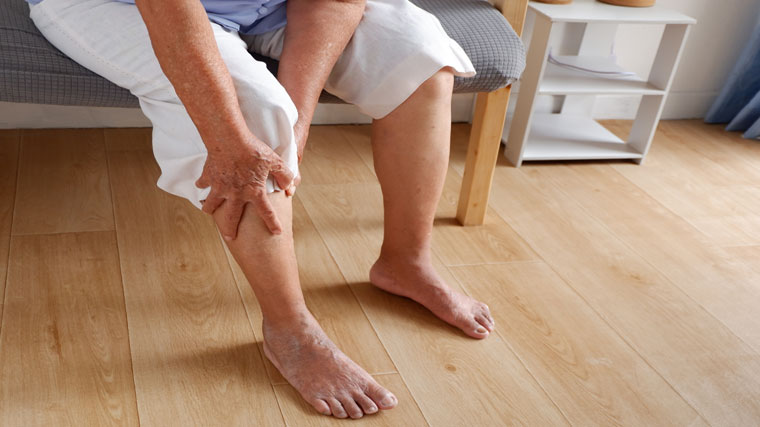- Cardiology And Vascular Health
- Health Topics
- Heart And Vascular Disease Prevention
- Peripheral Artery Disease
- Primary Care
- Stroke And Other Vascular Diseases
- Vascular Health
Vascular Screenings Important Part Of Reducing PAD Risk

Answer a few questions and we'll provide you with a list of primary care providers that best fit your needs.
The vascular system is an amazing collection of arteries, vessels, and capillaries that aid in the proper circulation of blood throughout the body.
The average person doesn’t give much thought to this superhighway system until something like a blockage keeps it from properly working. The vascular system can become compromised just about anywhere in the body – from your head down to your feet. In most cases it happens without a warning sign.
“There are many different types of vascular diseases,” says Srikanth Sadhu, MD. “We have cardiovascular disease , which is mainly blockages in heart arteries, and cerebrovascular disease, which is in the brain and the neck arteries and can cause strokes. Last, but not least, we have peripheral artery disease, which refers to the blockages of arteries in the abdomen or limbs.”
Peripheral artery disease (PAD) is one of the most common forms of vascular disease and the one for which physicians like Dr. Sadhu urge patients to be screened. About 20 million Americans have PAD. Up to four million have an artery blocked so badly that it poses a risk for limb amputation, he says.
“The most concerning part about this is that a majority of these patients are either minimally symptomatic or have no symptoms at all,” Dr. Sadhu adds. “This means they have no symptoms until their disease progresses into the more advanced stages.”
Why Screening Matters
Screening for vascular diseases like PAD is critical since they can occur with no symptoms. Those who should be screened include smokers, older adults over the age of 70, people with diabetes and high blood pressure, and anyone who has experienced prior cardiac events, Dr. Sadhu says.
Screening is also important because the discovery of PAD in a person likely means they are at-risk for coronary artery disease or cerebrovascular disease as well.
“If you don’t diagnose a person and it continues to progress it means it can eventually lead to a state where a small cut on their leg leads to the loss of a toe or leg,” he says. “Most importantly, the failure to diagnose means a person is walking around with a higher likelihood of suffering a heart attack or stroke and doesn’t know it.”
A thorough medical history and clinical exam are the first line of diagnosis for PAD. From there several different tests may be performed to diagnose vascular disease. Which one depends on the symptoms and area of concern. Tests include ultrasounds, Dopplers, and ankle brachial index (ABI), which measures blood pressure in arms and ankle levels. After these tests, CT angiogram or conventional angiogram may be necessary to further diagnose and treat the PAD.
Dr. Sadhu urges considering your risk for vascular disease and being proactive in consulting your physician about whether to undergo screening.
Never too late for prevention. You can lower your risk for vascular disease by adopting healthy lifestyle practices. For instance, eat a healthy diet, exercise, quit smoking, and manage diseases such as diabetes and high blood pressure. If you have a positive screening vascular disease you may be able to control it with lifestyle changes and regular physician checkups.
Be on the lookout. Know the classic signs for PAD: cramping in the calf, thighs, or buttocks when you walk which fades when you stop moving; pain at rest during the night; or pain in a leg that resolves when you shake your leg.
Early care means hope. Simple awareness of vascular disease and choosing to reduce certain risk factors can go a long way in preventing the disease. Early screening and careful collaboration with physicians can significantly alter your outcome when diagnosed with PAD.
Answer a few questions and we'll provide you with a list of primary care providers that best fit your needs.
Sources: Srikanth Sadhu, MD, Miami Valley Cardiologists





